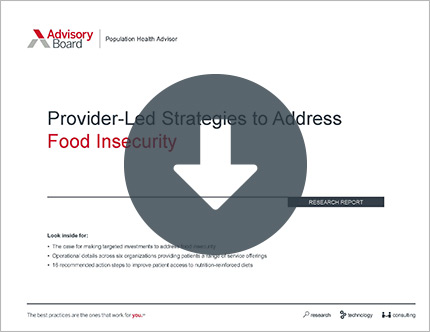Auto logout in seconds.
Continue LogoutWalletHub that used 31 metrics to determine the most and least obese states in the country.
10 tools for prioritizing community health interventions
Methodology
For the analysis, WalletHub looked at 31 metrics in three dimensions among all 50 states and the District of Columbia. Those dimensions were:
- Measures of a state's obesity and overweight prevalence, including the percentages of overweight and obese adults, teenagers, and children in the state;
- Measures of the health consequences associated with a state's overweight and obesity rates, including the percentages of adults with high cholesterol, type 2 diabetes, and heart disease in the state; and
- Measures of a state's general food and fitness scores, including the percentages of adults eating less than one serving of fruits or vegetables a day, consumption of sugar-sweetened beverages among adolescents, and fast food restaurants per capita in the state.
WalletHub ranked states based on their scores on those dimensions, with the obesity and overweight prevalence category worth the most points (at 60), followed by health consequences (at 25), and food and fitness (at 15). After determining each state's and D.C.'s score, WalletHub calculated a weighted average across all metrics to calculate an overall score.
WalletHub gathered its data from a number of sources, including information collected by the U.S. Census Bureau, the U.S. Bureau of Labor Statistics, and the Robert Wood Johnson Foundation.
The most overweight states
According to WalletHub, West Virginia is the most overweight state based on overall score, while Utah is the least overweight state based on overall score.
WalletHub also ranked the states by how they performed in each of the three categories. According to WalletHub:
- Mississippi ranked the worst for obesity and overweight prevalence, while Colorado ranked the best;
- West Virginia ranked the worst in the health consequences category, while Utah ranked the best; and
- Mississippi ranked the worst in the food and fitness category, while South Dakota ranked the best.
Experts weigh in with tips for weight loss
Kellsey Frank, a sports dietitian and assistant director at the Center for Nutrition & Performance at Drexel University, said one of the most common mistakes she sees among people trying to lose weight is that they eliminate a certain food group. "Whether it be carbohydrates, dairy, protein, fruits, or vegetables, all of these food groups play an extremely important role in achieving a healthy, well-rounded diet, and should not be avoided unless a medical necessity or allergy is deeming it appropriate to do so," Frank said.
Kathleen Davis, assistant professor of nutrition and food sciences at Texas Woman's University, also said fad diets that call for restricting specific food groups often don't work.
"People who lose substantial weight and keep it off for a year or longer using lifestyle changes do not usually follow fad diets," Davis said. "They make sustainable changes—ones that they are able to commit to and do not seem too onerous."
In addition, Brandy-Joe Milliron, an associate professor in the nutrition sciences department at Drexel, said eating out less frequently could help people to lose weight.
Paula Rodriguez Miguelez, assistant professor in the department of kinesiology and health sciences at Virginia Commonwealth University, said people trying to eat healthier can cook foods at home that include "vegetables, good sources of protein, and healthy oils." She also recommended using "peak season fruits and veggies to prepare delicious meals while increasing your intake of essential vitamins and nutrients."
Rachel Green, a dietetic intern at the department of human sciences at Ohio State University, and Julie Kennel, an associate professor with the department, said people should aim to make half of their plates filled with fruits and vegetables; make half of the grains they eat whole grains; vary the proteins they eat; and reduce their intake of added sugars, saturated fat, and sodium (McCann, WalletHub "2020's Most Overweight & Obese States in America," 11/10; Ellison, Becker's Hospital Review, 11/11).
Don't miss out on the latest Advisory Board insights
Create your free account to access 1 resource, including the latest research and webinars.
Want access without creating an account?
You have 1 free members-only resource remaining this month.
1 free members-only resources remaining
1 free members-only resources remaining
You've reached your limit of free insights
Become a member to access all of Advisory Board's resources, events, and experts
Never miss out on the latest innovative health care content tailored to you.
Benefits include:
You've reached your limit of free insights
Become a member to access all of Advisory Board's resources, events, and experts
Never miss out on the latest innovative health care content tailored to you.
Benefits include:
This content is available through your Curated Research partnership with Advisory Board. Click on ‘view this resource’ to read the full piece
Email ask@advisory.com to learn more
Click on ‘Become a Member’ to learn about the benefits of a Full-Access partnership with Advisory Board
Never miss out on the latest innovative health care content tailored to you.
Benefits Include:
This is for members only. Learn more.
Click on ‘Become a Member’ to learn about the benefits of a Full-Access partnership with Advisory Board
Never miss out on the latest innovative health care content tailored to you.

